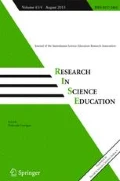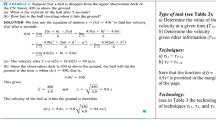Abstract
Many studies have shown that Newton's Third Law of Motion is not easy for students to accept when they consider the interaction of two objects. A number of prominent science educators believe that it should not be taught to students before Year 11. This paper reports the results of a study of the historical origins of Newton's Third Law with a view to identifying the context from which it emerged in the 17th century and the conceptual changes which accompanied its emergence. Some of the possible implications of a study such as this for improving the teaching of introductory mechanics are discussed.
Similar content being viewed by others
References
Arons, A. & Bork, A.M. (1964). Newton's laws of motion and the 17th century laws of impact.American Journal of Physics, 32, 313–317.
Blackwell, R. J. (1966). Descartes' laws of motion.Isis, 57, 220–234.
Brown, D.E. (1989). Students' concept of force: The importance of understanding the third law.Physics Education, 24, 353–358.
Descartes, R. (1644). Principles of philosophy. Extracted in Anscombe, E. & Geach, P.T. (eds)Descartes: Philosophical writings. Melbourne: Nelson, 1964.
Dijksterhuis, E.J. (1961).The mechanization of the world picture, London: Oxford University Press.
Gabbey, A. (1980). Huygens and mechanics. In H. Bos, M. Rudwick, H. Snelders & R. Visser (eds).Studies on Christiaan Huygens. Lisse: Swets & Zeitlinger, 166–199.
Gauld, C.F. (1975). Newton and the second law of motion.Australian Science Teachers Journal, 21(1), 57–62.
Gauld, C.F. (1992). Teaching forces with feeling. A paper presented at the Annual conference of the Science Teachers Association of NSW, University of Western Sydney, Campbelltown, 11–13 September.
Hall, A.R. (1966). Mechanics and the Royal Society, 1668–1670.The British Journal for the History of Science, 3(9), 24–38.
Herivel, J. (1965).The background to Newton's Principia: A study of Newton's dynamical researches in the years 1664–84. London: Oxford University Press.
Home, R.W. (1968). The third law in Newton's mechanics.The British Journal for the History of Science, 4, 39–51.
Huygens, C. (1669). A summary account of the Laws of Motion.Philosophical Transactions of the Royal Society, 3, 925–928.
Koyré, A. (1965). Newton and Descartes.Newtonian studies. London: Chapman & Hall, 53–114.
Mach, E. (1960).The science of mechanics. Translated T.J. McCormack, LaSalle, IL.: Open Court (originally published in German, 1893).
Maloney, D.P. (1984). Rule-governed approaches to physics—Newton's third law.Physics Education, 19, 37–42p.
Newton, I. (1729).The mathematical Principles of natural philosophy. English translation of the third edition by Andrew Motte, revised F. Cajori, 1934, New York: Citadel Press.
Wallis, J. (1669). A summary account given by Dr John Wallis, of the general Laws of Motion, by way of Letter written by him to the publisher, and communiucated to the R. Society, November, 26, 1668.Philosophical Transactions of the Royal Society, 3, 864–866.
Westfall, R.S. (1971).Force in Newton's mechanics. London: MacDonald.
Wren, C. (1669). Lex Naturae de Collisione Corporum.Philosophical Transactions of the Royal Society, 3, 867–868.
Yokoyama, M. (1972). Origin of the experiment of impact with pendulums.Japanese Studies in the History of Science, 11, 67–72.
Author information
Authors and Affiliations
Additional information
Specializations: physics education, concept development, history and philosophy of science in science teaching.
Rights and permissions
About this article
Cite this article
Gauld, C. The historical context of Newton's Third Law and the teaching of mechanics. Research in Science Education 23, 95–103 (1993). https://doi.org/10.1007/BF02357049
Issue Date:
DOI: https://doi.org/10.1007/BF02357049




